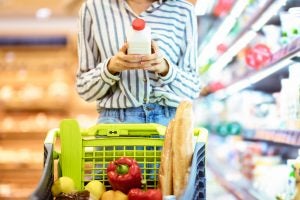Throughout the COVID-19 pandemic, grocery prices skyrocketed as shelves were left bare of novelties and necessities. The culprit? Supply chain disruptions.
The COVID-19 pandemic severely strained the U.S. food supply chain, exposing vulnerabilities from farm to table. With limited capacity to meet surging demand due to sick workers and supply shortages, some companies seized the opportunity to increase prices and boost profits. Larger retailers, wielding more influence, reinstated fines and penalties on suppliers through OTIF policies, giving them a competitive edge over smaller rivals.
A new report by the Federal Trade Commission seeks to answer some of the questions surrounding the years of price increases, while examining the pandemic-related supply chain issues among retailers, wholesalers, and suppliers and the impacts on consumers and businesses.
Ultimately, the report indicates that large grocers took advantage of disruptions in the supply chain to raise consumer prices.
In the United States, there are approximately 25,000 conventional supermarkets and roughly 15,000 additional grocery retail stores in different formats.

However, the grocery supply chain, which includes retailers, wholesalers, and suppliers, has significantly consolidated in recent decades. The FTC examined three major grocery retailers: Kroger, Walmart, and Amazon.
During the pandemic, these large retailers flexed their market muscle to secure scarce products, imposing strict delivery terms and fines on suppliers. This move potentially skewed product allocations and allowed these big players to solidify their dominance. Walmart notably tightened its supplier requirements as the crisis unfolded.
The pandemic also spotlighted the risks of overly consolidated supply chains. Some retailers, recognizing this vulnerability, started diversifying their supplier base. However, in markets with limited producers, big firms even considered building or buying manufacturing facilities, which could lead to further market consolidation.
The disruption in trade promotions, a major revenue source for many retailers, hit some harder than others. Retailers heavily reliant on these promotional funds struggled to compete, emphasizing the need for a closer look at the economic impact of trade promotions.
Lastly, despite the economic challenges, grocery retailer profits soared during the pandemic. Profit margins for food and beverage retailers climbed to over 6 percent in 2021, even higher than the previous peak in 2015. This significant profit surge raises concerns and calls for further investigation by policymakers to understand the relationship between rising retail prices and increased profits.
Overall, the pandemic revealed the competitive dynamics within the grocery industry, emphasizing the risks of limited competition and the benefits of diversified supply chains. As supply chains recover, the underlying issues of market concentration and resilience remain unresolved.


